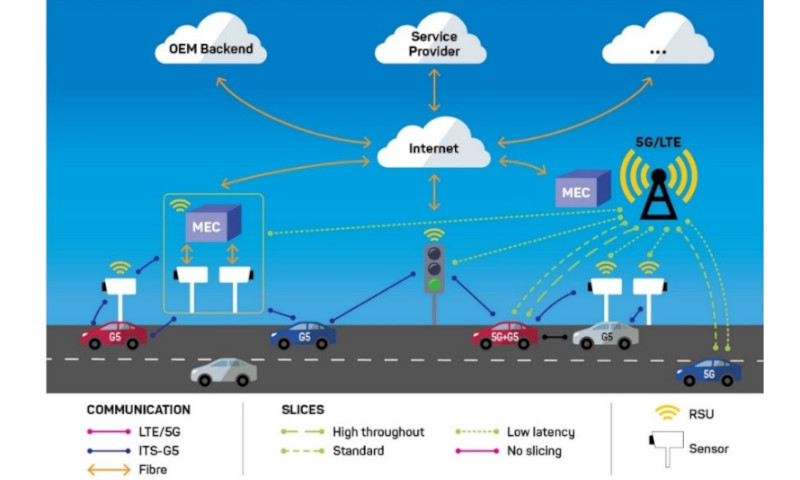Last modified more than a year ago

How the ICT4CART project supports road transport automation?
ICT4CART – a Horizon 2020 funded project (ICT Infrastructure for Connected and Automated Road Transport) is providing an ICT infrastructure to enable the transition towards road transport automation. ICT4CART is bringing together technological advances from different industries, mainly telecom, automotive and IT. It adopts a hybrid communication approach where all the major wireless technologies are integrated under a flexible network architecture. This will ensure performance and resilience for different groups of applications according to the needs of higher levels of automation (L3 & L4). Additionally, a distributed IT environment for data aggregation and analytics will be implemented. Cyber-security and data privacy aspects will be duly considered throughout the whole ICT infrastructure. To achieve its objectives ICT4CART, instead of working in generic solutions with questionable impact, it builds on four specific high-value use cases which will be demonstrated under real-life conditions at the test sites in Austria, Germany, Italy and across the Italian-Austrian borders.
The ICT4CART project (coordinated by Dr. Angelos Amditis, Research Director at ICCS) is halfway to its completion (M20) and the main achievement in the first half of the project is the development of an innovative and generic architecture that can be deployed all over Europe. It supports a seamless operation with different communication technologies and considers MEC to allow for low-latency services. Embracing these technologies ICT4CART enables high-value use-cases for automated driving like smart parking, intersection crossing, lane-merging and cross-border interoperability.
The basic communication technologies involved are LTE/5G (cellular) and ITS-G5 (ad-hoc). When using 5G, slicing may be used to provide a QoS required for the kind of information to be transported. Hybrid connectivity, i.e. using ITS-G5 and LTE/5G together, is also available in ICT4CART. Vehicles can retrieve information over the different communication paths, either from the same source or from different sources. The road in the ICT4CART architecture is equipped with RSUs, connected sensors, and connected traffic lights. LTE/5G base stations receive and transmit data via cellular network. ITS-G5 RSUs receive and transmit data via ITS-G5. Sensors and traffic lights are connected either via fiber cables, cellular network, or via ITS-G5.
ICT4CART architecture also incorporates the use of MEC servers, which are situated close to a base station of a cellular network, providing computation closer to end devices and thereby avoiding time-consuming data transmission via the Internet.
The ICT4CART architecture is refined to the following views (a full list of the deliverables defining the views can be found at under WP3 deliverables):
- Functional view: the architecture consists of a collection of functional blocks; the functional view organises the functional blocks into groups according to their common purpose: supporting services, sensors and actuators, applications, core services, hybrid wireless network, cooperative automated vehicle (CAV), security and privacy.
- Data/IT environment view comprises the high-level data flows as well as the data types.
- Communication view includes the wireless ad-hoc communication and the cellular communication.
- Cyber-security & privacy view comprises a cyber security supervision service, an identity and access management service, and data privacy mechanisms.
During the 1st period of the project the different views of the architecture were defined and the first versions were developed. Along the completion of the project in the 2nd period all the components of the ICT4CART architecture will be developed for the 5G radio technology. The ICT4CART solutions will be deployed in all sites (D7.2) and the UCs will be demonstrated to showcase the impact of the ICT4CART work in the increase of the automation levels in a safe and sustainable manner.
Photo @ ICT4CART architecture


